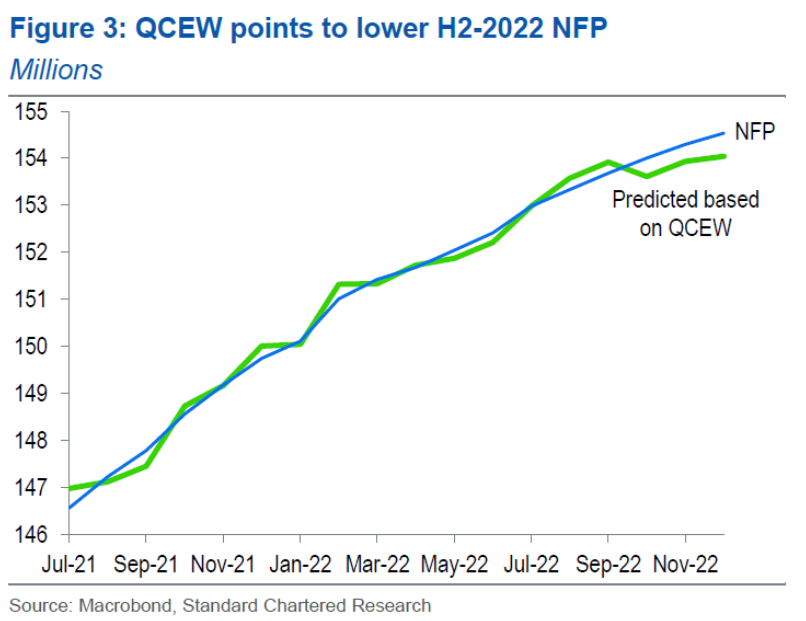More On NFP Employment Overestimation
In a post from Sunday, I noted that NFP employment might be overestimated, but trends were generally aligned. Noting how the Business Employment Dynamics (BED) and Quarterly Census of Employment and Wages (QCEW) data have provided different signals, Steven Englander at Standard Charter has calculated how much overstatement there might be.

Source: Steven Englander, “How Accurate is NFP,” Standard Charter, July 11, 2023.
The difference between estimated (using 2012-2023 fit of NFP on one year of lagged QCEW and NFP) is about 500,000 at 2022’s-end. He observes that the birth-death model for firms might be the source of the difference.

Source: Steven Englander, “How Accurate is NFP,” Standard Charter, July 11, 2023.
Interestingly, the 500,000 is remarkably close to the 616,000 indicated by the Philadelphia Fed’s early benchmark (572,000 for April 2023, last observation estimated). The gap is shown in the figure below (difference between blue line and red line), drawn from this post.

Figure 1: Nonfarm payroll employment from CES (blue), CPS household series adjusted to NFP concept (tan), QCEW total covered aggregate, seasonly adjusted using X-13 (green), all in 000’s, s.a. Source: BLS via FRED, BLS, BSL-QCEW, Philadelphia Fed.
The CPS-based employment series are not subject to error arising from the firm birth-death model. While that the civilian employment series adjusted to the NFP concept is about 1.85 million below the actual NFP as of June 2023, there has long been a gap between the two series. More interesting perhaps is the change in both series since 2021M06. There, reported NFP has grown 278,000 more than the CPS-derived series.
So, while there is some evidence that NFP employment is growing more slowly than reported, it looks like the cumulative difference since mid-2022 it is not likely to be in the millions.
More By This Author:
China, Mid-2023: Teetering On Deflation
Alternative Readings On Private And Total Nonfarm Payroll Employment
Business Cycle Indicators As Employment Growth Decelerates



